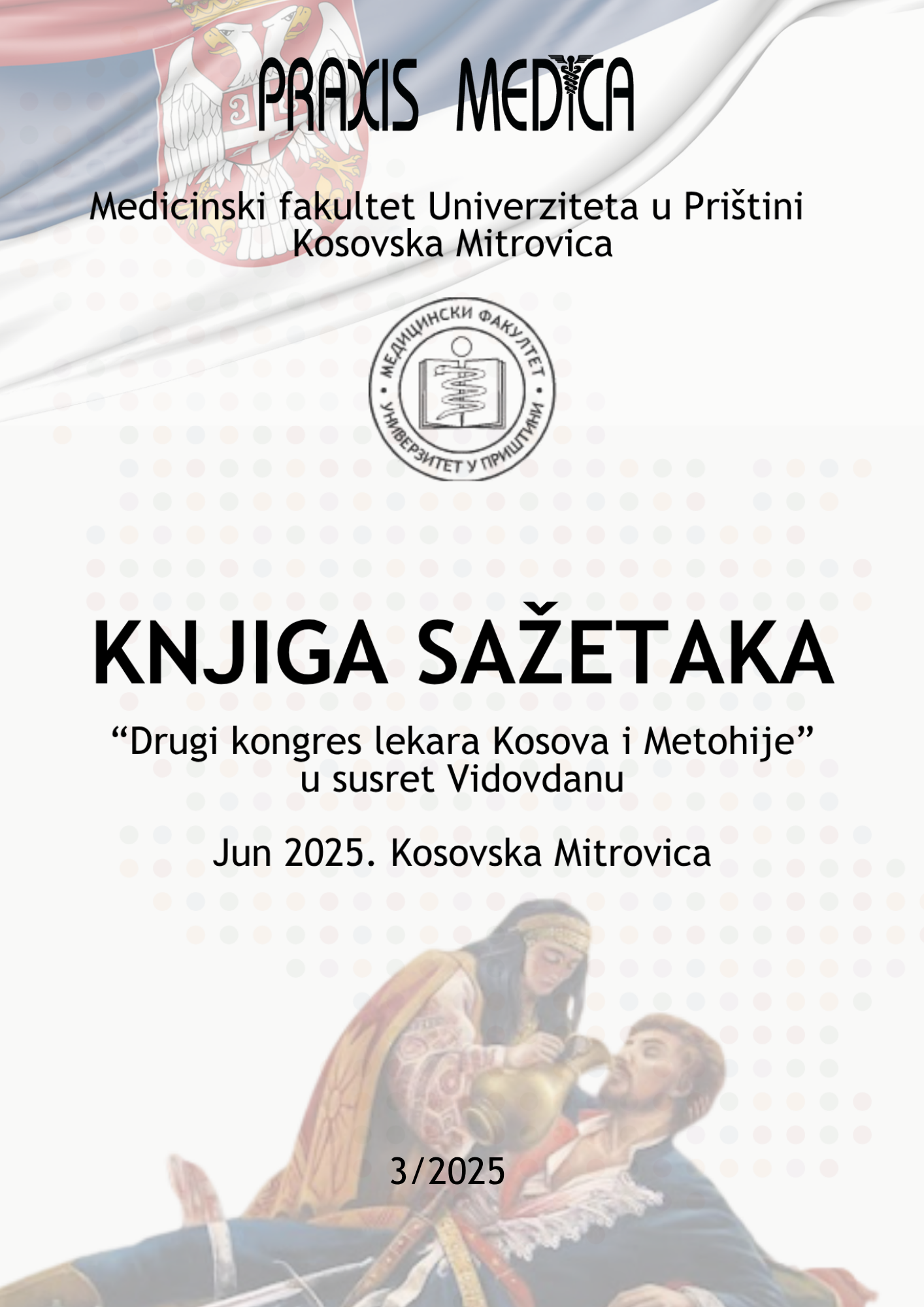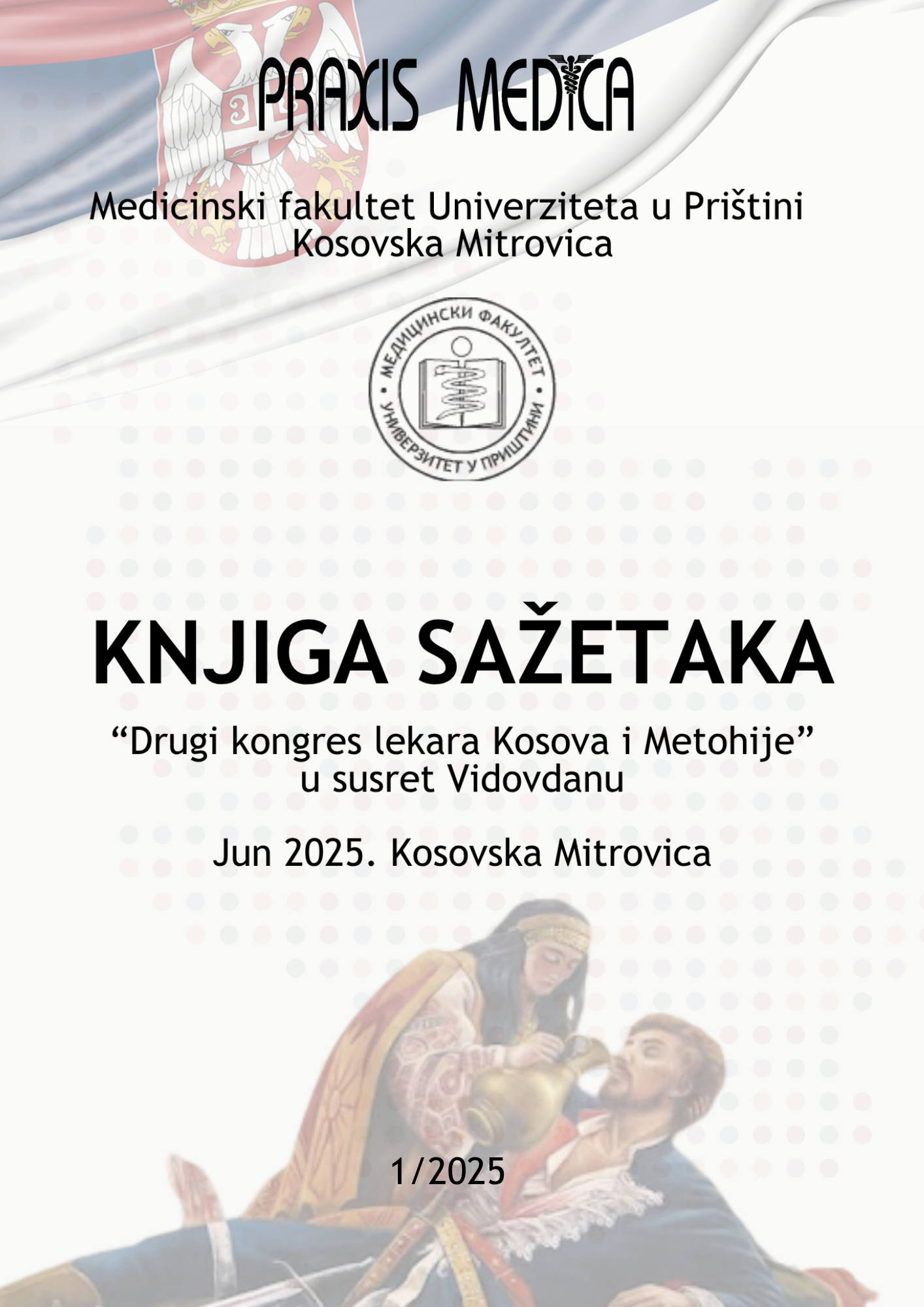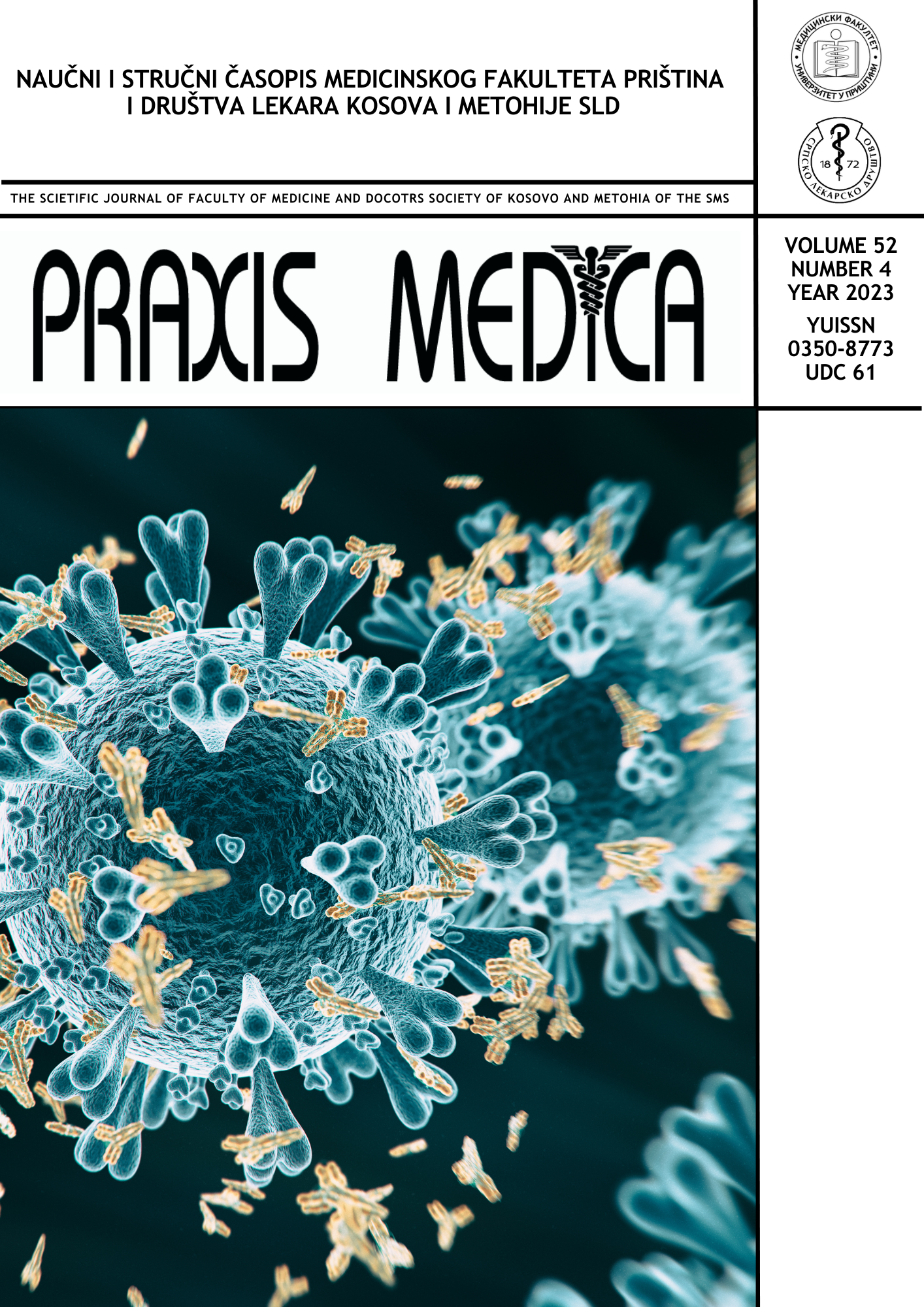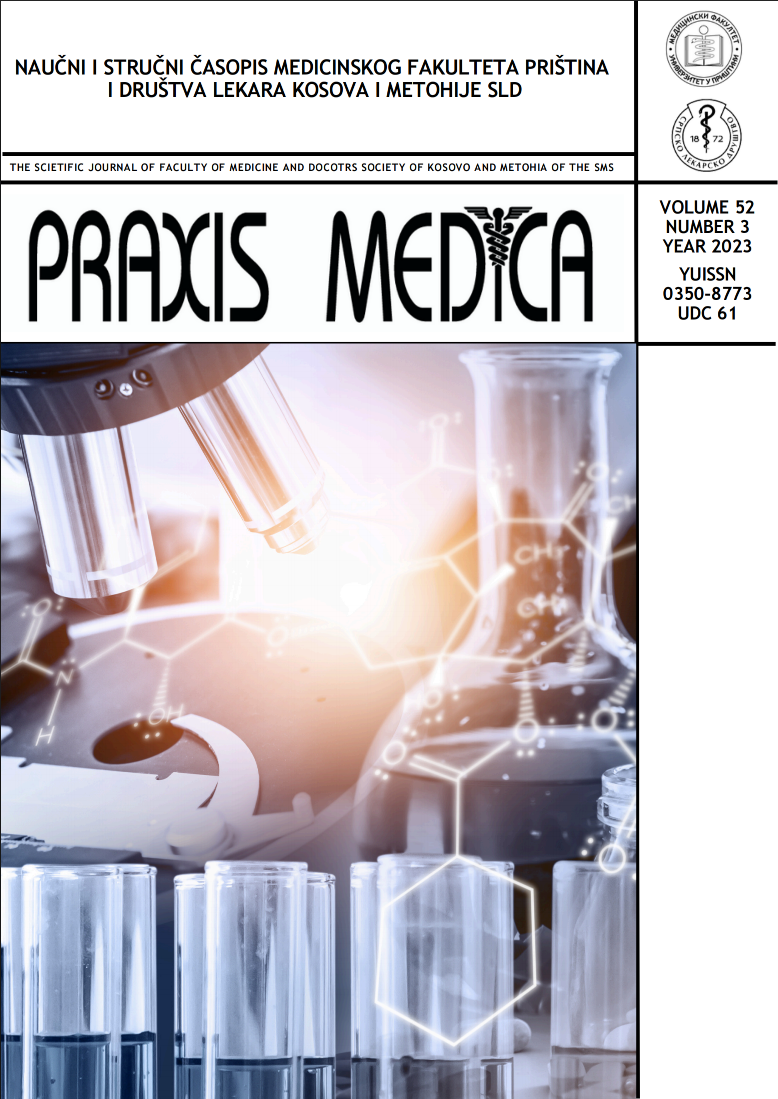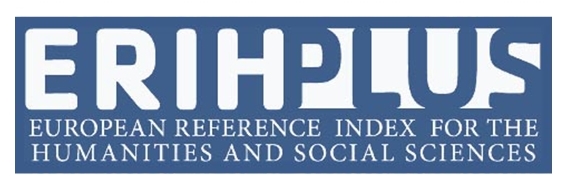Current issue

Volume 53, Issue 4, 2025
Online ISSN: 2560-3310
ISSN: 0350-8773
Volume 53 , Issue 4, (2025)
Published: 30.06.2025.
Open Access
All issues
Contents
01.12.2017.
Professional paper
Suicide as a cause of death with drug addicts
There were 351 drug addicts examined post mortem from 2006 till 2015 at The Institute of Forensic Medicine in Belgrade. In most of the cases death was accidental, caused by the use of psychoactive substances totaling 219(62,4%), followed by suicidal deaths 35 (10,0%) and deaths from traumas caused in traffic accidents. The most common manner of suicide was death by hanging (48,6%), jump from a height (28,6%), suicide by firearm (17,8%). There were no recorded suicides by overdose. The age of post mortem drug addicts where the suicide was a cause of death, did not statistically differ from others, accidental deaths, caused by the use of psychoactive substances. However, drug addicts died from traumas in traffic accident were statistically significantly younger in comparison to previous two groups. The median blood morphine levels concentration value did not statistically differ significantly in all three examined groups. Quite often there was alcohol presence in blood of drug addicts who died in traffic accidents.
Vladimir Jakšić, Suzana Matejić, Aleksandra Ilić, Miroslav Milošević, Dijana Mirić
01.12.2017.
Professional paper
Dry eye disease incidence in hemodialysis
Introduction: patients undergoing hemodialysis has numerous ophthalmological complications. Aim: To explore if the dry eye disease incidence, in patients undergoing hemodialysis, exists and if its frequency is greater compared to the healthy subjects. Methods: A total of 126 patients undergoing hemodialysis as well as 23 healthy subjects underwent complete ophthalmological examinations. The dry eye disease tests were performed in the patients undergoing hemodialysis: Schirmer test, Tears Break Up Time (TBUT) test and “Red eye syndrome”. Results: Comparing findings of dry eye disease parameters in patients undergoing hemodialysis vs. healthy subjects findings were the following: Schirmer’s test results 52,78% vs. 36,36%, (χ2 = 4,02, p=0,0448, p<0,05) and “Red eye syndrome” 38,10% vs 19,05% ( χ2 = 5,69, p=0,0170, p<0,05), while the TBUT test has shown pathological results in 38.89% of undergoing hemodialysis patients. Conclusions: Dry eye disease is significantly more frequent in patients undergoing hemodialysis than in healthy subjects.
Divna Stamenković, Dubravka Vukša, Olivera Đokić, Jana Mirković, Miloš Mirković, Vesna Jakšić
01.12.2017.
Professional paper
Effect of topical ozone therapy on denture-related traumatic ulcers: A case report
Introduction: Dental related oral mucosal lesions are most often complications of wearing removable dentures. Painful lesions treatment beside removing ethiologyical factor is symptomatic therapy. Recent investigations of ozone have reported that ozone can induce the wound healing. Case raport: A patient with three ulcerative lesions subsequently developed as a result of wearing implant retained overdenture were included in the study. Each lesion recived conventional care whereas tested lesion recived topical gaseous ozone therapy additionaly. Ozone was applied directly on the musocal lessions for three times in 1 week (baseline-1.day-3.day). The basic result were changes in greatest dimension of every lesion from first treatment and at days 1 and 3. Conclusion: The current case report showed positive effect of gaseous ozone on accelerating the process of healing and pain reduction but future clinical studies are needed to confirm these findings.
Almina Muric, Bilge Gokcen-Rohlig, Tamer Celakil
01.12.2017.
Professional paper
Obstructive sleep apnea from the dentist point of view: The very first experiences
Obstructive sleep apnea (OSA) is the most common respiratory sleep disorder and present the occurrence of a minimum of five interruptions in breathing and/or the decrease in ventilation for more than 50%, minimum duration of 10 seconds, during one hour of sleeping (apnea/hypopnea index -AHI) with the existence of daytime and nighttime difficulties.The diagnosis of sleep-disordered breathing is made by polysomnography testing in specialized centers. Depending on the type and severity of the disorder different therapeutic modalities are available:hygienic-dietary regimen and lifestyle, use of oral appliances (OA), noninvasive ventilation with continuous positive airway pressure (CPAP)through a mask during sleep time and surgical approach to upper airways. CPAP is a gold standard in sleep apnea syndrome treatment, especially in severe forms of OSA.A therapy of choice for mild to moderate obstructive sleep apnea and at the same time an alternative treatment for CPAP intolerance are oral appliances.A mandibular advancement device and a tongue-retaining device are in use. Simplicity, portability, lack of noise, independence from a power source, and potentially lower cost, bring potential advantages over CPAP.By increasing the volume of upper airways, the number of obstructive breathing events is being significantly reduced, and arterial oxygen saturation is being improved. A close cooperation and surveillance by medical doctor and dentist is required, from the correct choice and drafting of oral appliance, through initial patient's accommodation to treatment, to long-term follow-up of therapeutic effect in sleep medicine laboratories.
Daniela Jokić, Sandra Pjevac, Dragana Miličić, Ana Andrijević, Ivan Kopitović
01.12.2017.
Professional paper
The importance and role of echotomographic examinations in malignant altered axillary lymph nodes
Introduction: The presence of malignant altered axillary lymph nodes, and their timely detection is crucial for staging and prognosis of breast cancer. Echotomographic examinations are widely used technique, and represents one of the first tests of diagnostic modalities. Classic B mode, Doppler sonography, and MicroPure testing technique, allow a comprehensive assessment of the detailed morphology and internal structure of the nodes (number, location, size, shape, borders, echogenicity, edema of the surrounding soft-tissue, the presence of microcalcifications), and determination of their nature. Objective:The aim is to determine the role of echotomographic review the morphology, determining the nature and setting guidelines for diagnostic testing algorithm for malignant altered axillary lymph nodes. Materials and methods: This cross-sectional study included 212 echotomographic tested axillary lymph nodes in the Department of Radiological Diagnostics KBC "Dr Dragisa Mišović-Dedinje" in Belgrade, in the period from February 2016.do March 2017. All patients were examined in the supine position with arms in abduction, and external rotation. The following parameters: shape, size, and homogeneity of the echo-structure, edge, an auxiliary structures such as intranodal necrosis, edema and peripheral vascularization, as well as the presence of microcalcifications, using classical B mode, Doppler sonography and MicroPure technique. For all examinations we used Toshiba device, Aplio XG, 10MHz linear transducer. Results: Of a total of 212 tested nodule, histopathology was also verified 44 malignantly changed (21%), 4 of which the primary (9%) in a patient with Hodgkin's lymphoma, and secondary 40 (91%) in patients with breast cancer. Other nodes 168 (79%) were normal-reactive. The best performance in the echotomographic examinations are the criteria of: the shape (longitudinal cross-ratio <2) with a sensitivity of 86.9%, presence of microcalcifications with sensitivity of 83,7%, hilus (not clearly defined, and hypoechogenic) with sensitivity of 81.8%, the size (transverse diameter greater than 8mm), with a sensitivity of 79.2%, as well as echogenicity (hypo to anechogenic) with sensitivity of 73.1%. Conclusion: Echotomographic review is a useful imaging modality in evaluating the morphology and nature of axillary lymph nodes, but none echotomographic criterion in itself is not enough reliable in evaluating malignancy. Meticulousness when reviewing and examining all the criteria and modalities (B mode, Doppler, MicroPure) remain imperative in the diagnostic algorithm of tests axillary lymph nodes.
Miloš Gašić, Ivan Bogosavljević, Bojan Tomić, Milena Šaranović, Aleksandra Milenković, Sava Stajić
01.12.2017.
Professional paper
Surgical treatment of the inguinal canal pathology in children
Introduction: Hernia is a defect of the continuity of the normal musculoaponeurotic and fascicular abdominal wall, which allows the release of any tissue, except those that normally pass through the apertures on the abdominal wall. Aim: The aim of the paper is to show the frequency of pathological changes in the inguinal region, their timely diagnosis and treatment, in order to avoid the severe consequences of their complications. Material and methods: For this study two-year material of the Surgical Clinical Hospital Clinical Hospital Priština in Gracanica was used, where we analyzed 102 patients who were operated in this center due to pathological changes in the inguinal region. Results: Male males are represented by 91 (89.22%), and female sex with 11 (10.78%) cases. Hernia was recorded in 86 (84.31%) and testicular retention in 16 (15.69%) patients. Femoral hernia in children is extremely rare and occurs in about 0.2% of all hernias of childhood. The femoral hernias on the left with faded and gangrenous left adnex were found in a baby only three months old, where adnectomy was done. Primary hernias was 84 (97.63%) of the patients, while we recorded recurrent hernias in two (2.33%) patients. With one child, we did a recurrent retention of testicles, which was done for a year in another institution. Postoperative complications were reported in one (0.98%) patients, where there was an infection of the wound. Conclusion: In modern surgical practice, it tends to diagnose the hernia at an early stage of development, which facilitates intervention and provides a better postoperative outcome. Incarceration represents a serious complication of all hernias, so timely and accurate diagnosis is needed to take adequate surgical intervention.
Jovan Mladenović, Nebojša Videnović, Dragan Perić, Saša Mladenović, Kristina Mladenović
01.12.2017.
Professional paper
Histological analysis of tissue of the interdental space before and after correction of irregular fillings: Experimenting on animals
Correlation of fillings on the tooth and changes in the tissues having direct contact with the tooth aroused keen interest amongst many professionals. Irregularly shaped fillings can damage the periodontal tissues. The primary indicator of the validity of the dental work is its ability to ensure the preservation of normal physiological status of the tissue, primarily gingival, alveolus and periodontum. The main purpose of this paper is to make histological assessments of the tissue of the interdental region before and after correction of irregular filling in experimental animals. The research was conseived as a histiological study with experimental animals ( rabbits). The tested teeth were divided into two groups: a) the experimental group consisted of teeth with irregular fills, and b)the control group consisted of teeth with regular fillings and healthy teeth. The experiment carried out under general anesthesia. The experiment was being monitored over 12-month period. Having been expired the first part of the experiment , after 6-month period, in experimental animals, it was carried out the second part of the one consisting of the correction of irregular fillings. The second part of thhe experiment was closely monitored a month, three and six months after the correction of irregular filings. After sacrificing the animals, tissue was prepared for histological analysis. Histological analysis showed changes in the periodontal tissues prior to correction of irregular fillings and significant improvementof the tissue of the interdental region after correction of the same ones. The pathological changes occuring in the periodontal tissues are not irreversible since after correction of irregular filligs are being lost mainly.
Dušan Živković, Milan Živković, Milan Miladinović, Zorana Veličković, Dejan Perić, Radovan Jovanović, Miloš Staletović, Raša Mladenović
01.12.2017.
Professional paper
The most frequent comorbidities at patients with the chronic obstructive pulmonary disease
Chronic obstructive pulmonary disease (COPD) is a disease with periods of remission and exacerbation and consequential defect of the pulmonary function. It is estimated that around 3 million people die from it annually and predicted that until 2030 the number of deaths will be up to 6 million per year. According to the reports of the World Health Organization and Global initiative for chronic obstructive lung disease (GOLD) it is predicted that COPD in the next decade will be the third leading cause of death in the world.[ 1, 2 ] It is characterized by limited air flow in the breathing pathways which is not completely reversible to therapy. Since there are systemic inflammations at COPD, the mechanisms of the processes have consequences outside the lungs also. Comorbidities are frequent at patients with the Chronic obstructive lung disease and they affect the disease prognosis substantially. The most common comorbidities are cardiovascular diseases, metabolic syndrome, diabetes, anemia, osteoporosis, anxiety and depression, pulmonary embolism.
Biljana Krdžić, Jelena Milovanović, Maja Šipić, Zlatica Petković, Biserka Nedeljković
01.12.2017.
Professional paper
Prevalence of anti HCV antibodies and anti HBV antibodies is risk groups of patients
Infections caused by viruses hepatitis B and C are one of the most severe problem in contemporary medicine. These viruses show high affinity to hepatocytes. The fundamental pathogenetic mechanisam which is responsible for hepatocyte damage, depends either on cytocidal effect of virus or immunological response of the infected host. The most common way of virus transmission nowdays is parenteralno, due to intravenous drug abuse, while earlier the blood transfusion was a more often the pathway of infection. Patients on chronical hemodialysis are at increased risk of HCV infection. The aim of our study was to determine the most common risk factors and pathways of HBV and HCV infection, as well as to assess the significance of the serological markers of hepatitis B and hepatitis C viruses in risk groups of patients. The study was conducted at Institute for blood transfusion at Health Center of Kosovska Mitrovica, in the period from January 2000 until December 2015. ELISA test was performed for the confirmation of presence of hepatitis B and hepatitis C viruses in the blood. The results showed that the number of respondents increased significantly during the research period. Voluntary blood donors were significantly more represented than respondents who were referred by a physician. Average age of all seropositive? examinees in the study was 47,1 ± 18,1 years (range from 8 – 79 years). HBV seropositivity was significantly more present compared to HCV seropositivity. The highest incidence of HBV and HCV infection was recorded in the working age population, between 40 and 50 years of age. Analyzing the data of the way of infection transmission, most patients reported an unknown pathway of infection (39%). The second most common way of infection transmission was hemodialysis (28.4%), while the intravenous drug abuse was noted in 13,4% of patients. We can conclude that the implementation of regular screening and timely prevention, as well as the education program of the population can be helpful in reducing the number of patients with HBV and HCV infection
Andrijana Odalović, M. Parlić, N. Katanić, B. Stolić, J. Aritonović
01.12.2017.
Professional paper
Clinical manifestation in patients with ischemic stroke in the border zone of the middle cerebral artery
Introduction: Clinical features of the ischemic neurovascular syndromes is constant and dependable from vascular territory of the affected blood vessel. Best examples are sensory and motor hemisyndromes and vision disturbances. Aim: To define motor, sensory and visual disturbances’ in patients with ischemic stroke in the border zone of the middle cerebral artery. Material and methods: Border zone ischemic stroke diagnosis was based on clinical and neurological examination and confirmed with brain computerized tomography. Estimation of the symptoms was obtained by history, and degree of functional (neurological) deficit was estimated based on NIH-NINDS scale. Results: In total 30 patients were included in the study, 12 (40%) were females 47-79 years of age (±62.3 years) and 18 (60%) males 43-79 years of age (± 58.7 years). Neurological features were clearly different based on the side of the infarct. In the group with (ACA+ACM) + (ACM+ACM) infarct localization hemiparesis is significantly more frequent. In the group with ACM+ACP infarct localization homonymous hemianopia is significantly more frequent. Initial symptom of the reversible loss of consciousness in duration of several minutes was observed in 14 (46.6%) patients. Focal seizures (clonic seizures of the face, arm and leg) were detected in 4 (13.3%) patients (all with infarcts in the anterior border zone ACA-ACM). Headache was rare manifestation seen in 5 (16.6%) patients with 4 having posterior border zone infarcts. Conclusion: Supratentorial border zone infarcts have high specificity in clinical manifestations. The implicates therapeutical approaches which are prone to specific procedures.
Vekoslav Mitrović, Snežana Filipović-Danić


